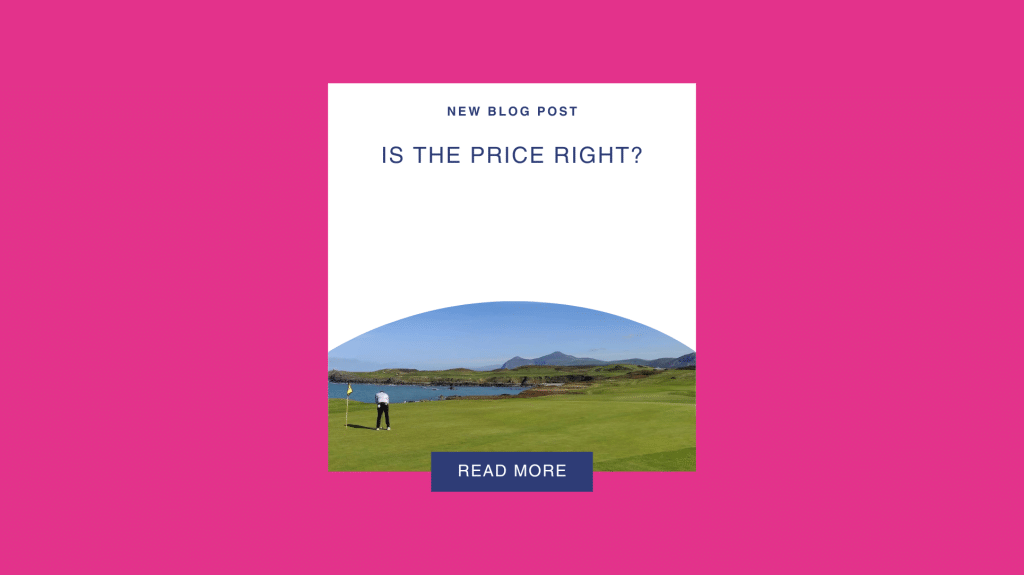The Importance of Pricing in Golf: What Does Your Price Say About Your Club or Brand?
Pricing is one of the most critical factors in shaping the perception of your golf club or brand. Whether you are a golf club setting green fees or a golf brand selling products, your pricing tells a story. It signals the level of quality, exclusivity, and value that customers can expect. But are you pricing yourself for success, or are you leaving revenue on the table?
What Does Your Price Say About Your Golf Club?
In the golf industry, price is more than just a number—it’s a statement. A high green fee suggests prestige, exclusivity, and premium conditions. Conversely, a lower-priced course may be perceived as more accessible but potentially lower quality. The challenge for golf clubs is to strike the right balance between perceived value and profitability.
According to recent industry data, green fees have dramatically increased in the past decade, with many premium courses now charging over double what they were ten years ago. But what does this mean for your club? If your green fees are rising, does this align with the quality of experience you provide? And if you’re underpricing, are you missing out on revenue while attracting a demographic that doesn’t align with your long-term goals?

Visitor Rates vs. Memberships: Finding the Right Balance
When setting visitor rates, clubs must consider their relationship with memberships. If visitor rates are too low, you risk devaluing your memberships and discouraging long-term commitment. On the other hand, if they are too high, you may struggle to attract new visitors who could eventually become members.
A good rule of thumb is to price visitor rounds at a level that makes membership a compelling value proposition. If an annual membership offers unlimited golf and pays for itself after 20 rounds, then your visitor rate should be high enough that frequent players see the benefit of upgrading to a membership.
Pricing Compared to Competitors: Are You Too Cheap?
Many golf clubs assume that lowering their prices will increase footfall, but is cheaper always better? Not necessarily. In fact, studies have shown that higher prices often create a perception of better quality. A £70 course may be just as good as a £100 course, but many golfers will assume the more expensive one is superior simply because of its price.
Instead of racing to the bottom, consider a value-based pricing strategy. If your course offers a premium experience—immaculate greens, top-tier customer service, and excellent facilities—your pricing should reflect that. Competing purely on price can attract bargain hunters rather than loyal, returning customers.
Key Takeaways for Your Golf Club or Brand
Pricing sets expectations – Higher prices often imply better quality, while lower prices may attract a more cost-conscious demographic.
Green fees should support membership value – Visitor rates should be high enough to make membership an attractive option.
Compare but don’t undercut – Being the cheapest course in your area doesn’t necessarily mean you’ll attract the right clientele.
Value-based pricing works – If you offer a premium experience, don’t be afraid to charge premium prices.
Ultimately, pricing is a strategic decision that shapes the perception of your club or brand. Instead of focusing solely on being the cheapest, think about the value you provide and how you can position your pricing to reflect that. Your price is a message—make sure it’s saying the right thing.
Looking for help with your pricing strategy?
Your GolfVantage specialises in helping the golf industry with marketing strategy, including pricing your product right. Let’s maximise your revenue—contact us today!